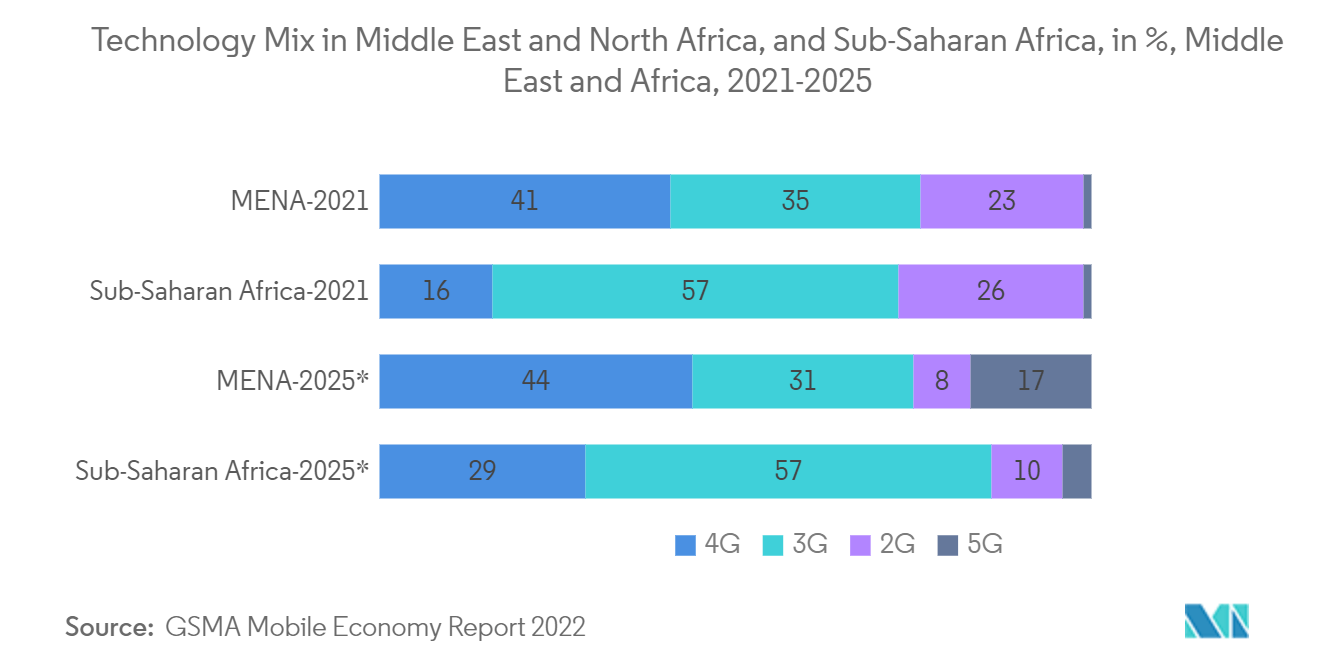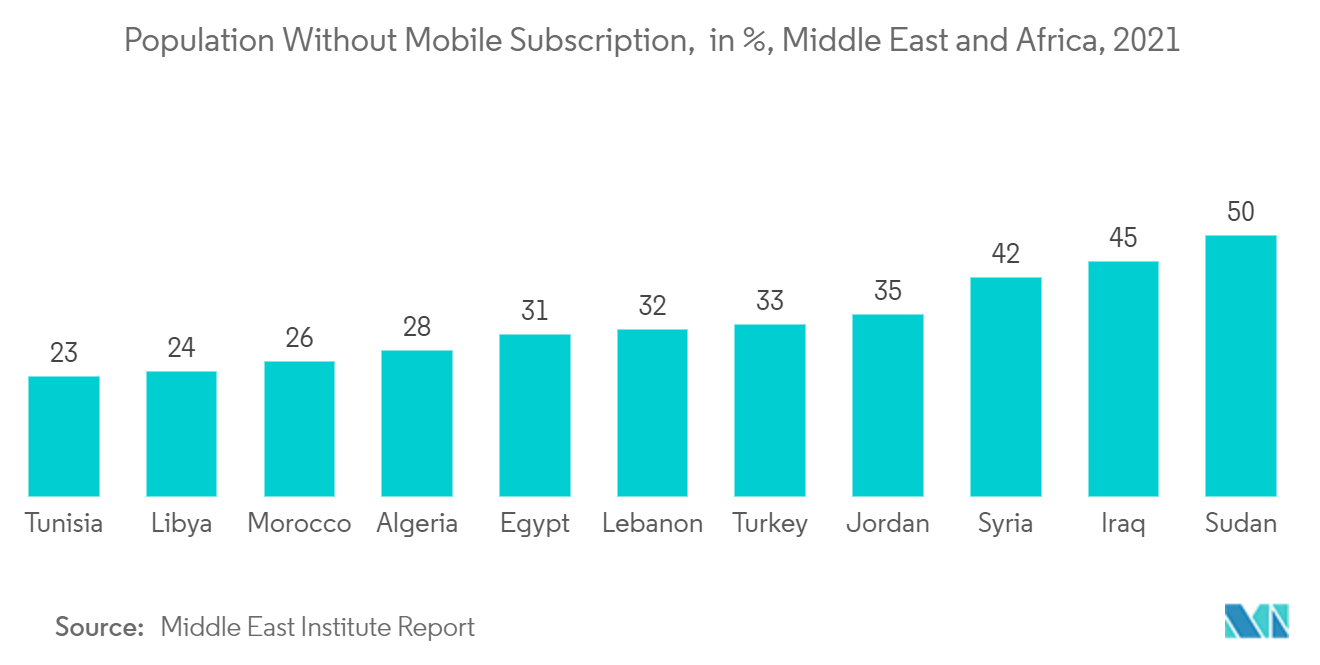Market Trends of Middle East and Africa Telecom Industry
This section covers the major market trends shaping the MEA Telecom Market according to our research experts:
5G technology is Expected to have Significant Share
- Governments and authorities in GCC nations, including Bahrain, Kuwait, Oman, Qatar, Saudi Arabia, and the UAE, have granted spectrum, and mobile carriers have deployed some of the first 5G networks in the world, making them 5G pioneers in the MENA area.
- However, a significant number of nations (Algeria, Egypt, Jordan, Lebanon, Morocco, Tunisia, and Turkey) have begun to identify the appropriate 5G spectrum and the best strategies for clearing the spectrum, which will feed into any technical limits and related technical license requirements. It is projected that 5G networks and services will be accessible in these nations starting in 2023.
- It is reported that operators have been testing and evaluating 5G in Algeria, Egypt, Morocco, and Turkey, and at least one operator has been developing a 5G network in Lebanon. In November 2021, Total Telecom reported that using Fixed Wireless Access (FWA), the Middle East region has taken the lead in bringing high-speed 5G connection to more people. There are over a million 5G FWA customers in the Middle East and Africa (MEA) area.
- The COVID-19 outbreak has delayed some of these countries' plans to roll out 5G. According to the GSMA's most recent projections, these nations should deploy commercial 5G services (BWA and mobile) between 2022 and 2024.
- According to GSMA Mobile Economy 2022 report, 5G technology is estimated to account for 17% of the total technology mix by 2025 in the Middle East and North Africa (MENA) region. In Sub-Saharan Africa, 5G to reach 4% by 2025.

Challenges in the Region Restrain the growth
- Data privacy and cybersecurity are two new regulatory problems that have emerged. These challenges have become serious as more and more users' private data is made available to telecom providers, social media platforms, and many other organizations. The region's nations were inspired to recognize the value of data protection by implementing the EU's General Data Protection Regulation (GDPR).
- Legislation has been proposed in an effort to advance data privacy while supporting the expansion of the digital economy. Others have dealt with it using a top-down strategy primarily concerned with strengthening state control, which might dash the nation's hopes for a quick digital transformation of its government and industry institutions.
- However, the Levant, North Africa, and Iran are subject to a sizable population of disconnected individuals, with 140 million not using mobile services and 350 million not using mobile internet. To close this gap, tens of millions of people will have to overcome the cost barrier or fight illiteracy.
- The direction of regional telecommunications trends is correct. However, not enough is being done to make mobile broadband and services available to more people. Most nations' universal service funds have been generating wealth from operators that might have been used to expand coverage in places where it is not economically feasible.
- Most governments have not provided adequate funding for digital government services or have not coordinated their policy in this regard. The majority of other countries haven't done much on this front. Still, the UAE and Saudi Arabia have prioritized having an environment that draws digital enterprises and allows them to develop quickly.

